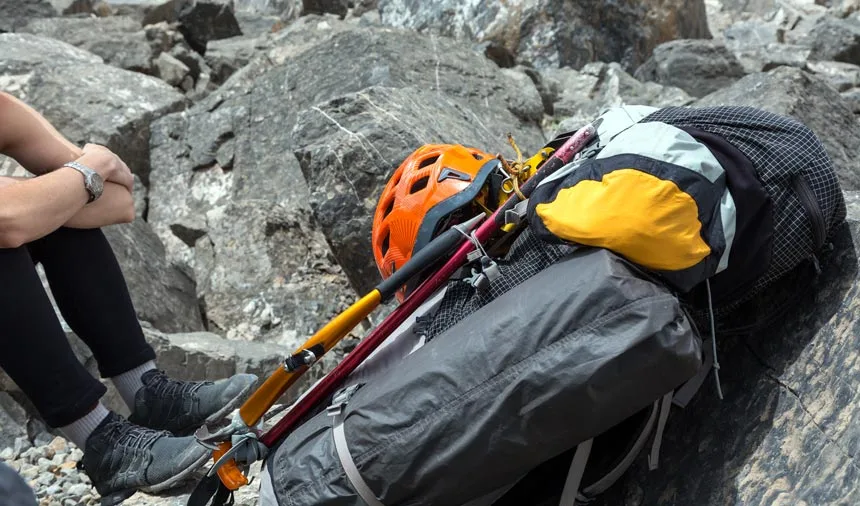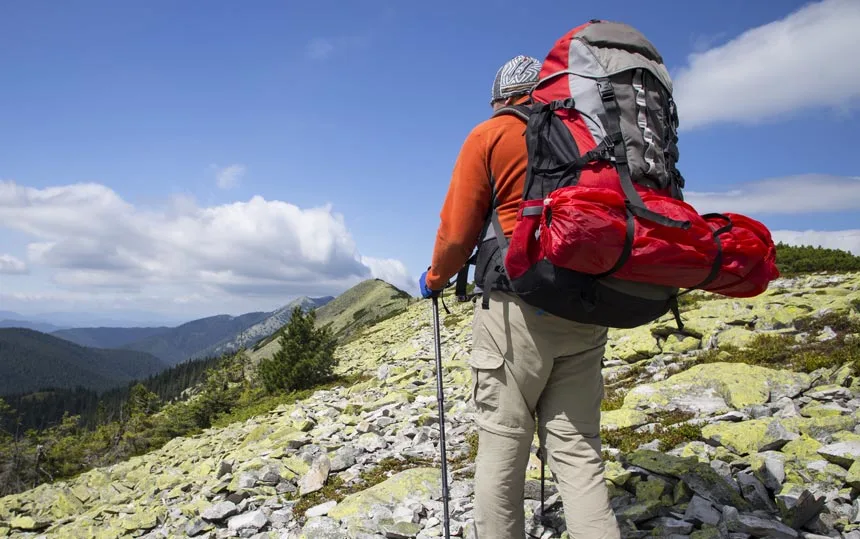Just as a good backpack is essential for any camping trip, a quality tent is too. It gives you the shelter and security required to enjoy your time outdoors. But what if you tear your tent on the way to your campsite? That’s why knowing how to attach a tent to a backpack is important.
If you can pack your tent correctly, it won’t just be safer on the journey. It will also be lighter and thus comfortable, reducing your back pain!
Packing your tent in a backpack may sound complicated, but it is easy once you learn the techniques. So, this article brings you the best practices to help you learn to pack a tent in a backpack more conveniently.
Table of Contents
How to Attach Tent to Backpack: 4 Ways to Do It Right
There is a variety of ways to attach a tent to a backpack. If you want this job done perfectly, you’ll have to practice packing the tent through trial and error until you find the best process. Here we bring the most common techniques of attaching a tent to a backpack,
1. Pack Your Tent at the Bottom of Your Backpack
You can easily pack your tent in a backpack by rolling each part and stuffing them inside. Begin with the rolled-up tent body, the rainfly, and the poles.
Laying your tent parts flat at the bottom of a backpack will allow you to transport them more efficiently. Don’t pack anything damp on top of your tent and other belongings to prevent damage to your tent and other belongings.
Before stacking the tent with your essential gear, ensure the poles are placed vertically in the middle of the backpack and oriented towards your back.
This keeps them very secure, as they are one of the heaviest components. Place your sleeping bag and inflatable sleeping pad on top of the rainfly and inner tent to help keep them dry and organized.
2. Pack Your Tent in the Main Compartment of Your Backpack
You can easily pack your tent inside your main compartment. First, you need to disassemble the tent and group it together. Then, you should place heavy items on top of it so that your tent is always in one place when you need it. Since it’s easier to take out, setting up your tent will go even faster!
The only downside of this setup is that you won’t be able to use your backpack’s main compartment as efficiently as a traditional backpack. Besides, the inside of your bag will never be organized well on your back.
This convenient packing system works well in backcountry camping despite minor setbacks. It can be the difference between an enjoyable trip, extra protection, and an uncomfortable experience.
3. Pack Your Tent to the Exterior of Your Backpack
You can pack your tent just as efficiently by attaching the poles and inner tent to the backpack’s exterior. This leaves plenty of room in the large stretchy pocket for the tent fabrics, rainfly, and smaller items.
To minimize the tent’s weight, place poles at the sides. This way, they’re very close to your center of mass, so your balance is less likely to be affected by them.
Ultralight hikers have been using this helpful trick for decades. You can save significant weight by opting for a smaller backpack and attaching your tent to the outside of the pack.
If it rains, you don’t have to worry about getting drenched — your inner tent fabrics will be safe inside the pack.
4. Distribute the Tent Materials Evenly in Your Backpack
Instead of carrying everything together, it’s best to spread your tent materials, such as rainfly, poles, and stakes, among your bags and pouches (backpack, pockets, hydration pack). You will distribute the weight better by spreading your gear and avoiding shoulder pain.
That will ensure that nothing gets damaged by extra stress on one particular area of your backpack. In addition, if necessary, you can securely attach certain gear to the shoulder straps with rope or compression straps.
5. Pack Your Tent Inside Your Backpack
There’s one more way to attach a tent to a backpack. You can stash your tent in the bag, fold the unnecessary cords and secure everything inside.
If this is easier for you or if you want to save space, pack the big things, like the tent fabrics. In this case, you don’t have to roll the tent fabrics or other stuff.
This system is a must to keep your camping gear in prime condition. It protects the soft parts of your tent that can be easily damaged by coming into contact with pointed or hard objects.
Additional Tent Packing Hacks You Must Know

Some campers use loops to connect backpacks and tents. But what do you need to know about that? Here are three additional tips for packing your bags effectively, whether you’re a seasoned camper or a novice adventurer.
1. Use the Closed-Loop Ties on Your Backpack
If you’ve got gear loops on the back of your backpack and strapped-out straps on the tent itself, tie them together. Pull the bag’s straps over the loops. Ensure that you’ve got a secure connection between the tent and backpack and that it doesn’t swing or sway.
In addition to the loops, you can use buckles, straps, and other fasteners to attach your tent to your bag. This is a practical and adaptable way to transport your gear.
You won’t lose your tent if you use these loops. This is one of the simplest methods for connecting your equipment. However, you can opt for another option if you don’t have any loops and straps.
2. Use the Backpack’s Compression Straps
Compression straps are a very easy way to add extra space to your pack if you’re packing an extra tent.
The straps secure the item on either side of your load with buckles that can be tightened just how you want them. This ensures a stable hiking experience: compression straps are the best way to keep your hike comfortable.
Start by pulling a strap over the top of your tent. Then slip the other loop through, folding it over your tent bag and cinching it tight.
If you have extra gear, you can use the loose straps to tighten things up even more — this will help stabilize your bag and keep things from sliding around in transit.
3. Use External Frame Backpacks
An external frame backpack is unlike any other luggage option. They are perhaps the best choice for comfortably carrying a heavy and bulky load.
Depending on your model, these frame backpacks provide ample support for bulky items or more. These packs feature metal frames that can be easily adjusted for maximum comfort and stability.
Some models come with sleeves for sleeping bags and tie-points at the bottom that you can use to attach your tent or other gear. Therefore, if you don’t know how to attach a tent to a backpack, external frames will make it easy and ensure convenient transportability.
The Bottom Line
The process of tent packing is not difficult. You can get the hang of it in no time — all you need is practice. What’s important is to pack your tent with comfort in mind. The best way to do this depends on what kind of backpacker you are and how you prefer to wear your backpack.
We hope this article has answered your main questions about how to attach a tent to a backpack and gives you the key knowledge you need to complete the job like a pro.




